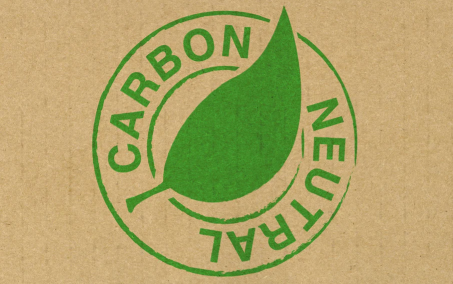What is Carbon Neutral Shipping?
Carbon neutral means that activity doesn’t bring any more carbon into circulation than there was already present.
Carbon-neutral shipping is the strategy undertaken by a company to diminish its carbon footprint. By striving to become carbon-neutral, a company will use eco-friendly and sustainable shipping materials.
The fact that most consumers are now aware of how badly carbon dioxide is impacting the planet and environment and that this factor is now influencing them as to which brands now get their custom as some studies are showing that emissions from shipping could make up approximately 17% of all carbon emissions worldwide by the year 2050.
E-commerce businesses hoping to reduce their carbon footprint and achieve carbon neutrality are now looking at ways of shifting over to carbon-neutral shipping alternatives.
Greenhouse gases that may lead towards global warming can be reduced if companies research and start to utilise the carbon-neutral shipping alternatives that are readily available today!
If a company wishes to become carbon-neutral, then it will have to take advantage of all the eco-friendly and sustainable shipping materials and practices that are out there right now.
Carbon Neutral Shipping Companies
Many courier companies are now making an option available for carbon-neutral shipping, which gives businesses the option to have their goods delivered in a more environmentally friendly manner.
Choosing one of these courier services will help to reduce your company’s carbon footprint and the impact on the environment and may even keep your customers loyal as, according to one survey, approximately 45 per cent of consumers expressed an interest in sustainable or environmentally responsible brands!
So, with the benefits outlined above not only for the environment but your brand and customer base, the next section will give a basic guide to achieving carbon neutrality in your shipping processes.
What is your carbon footprint?
The absolute first step in tackling your carbon footprint is finding out exactly how big it is! You need to measure, calculate, and evaluate exactly how much of an impact your shipping processes have on the environment. This alone will help you determine your best course of action and help you plan to reduce it.

Reconsider packaging materials and strategy.
Are you using too much packaging material? Can you reduce how much is used? Can you source a recyclable alternative?
Boxes, envelopes, and other ways of packaging goods to deliver them are essential for keeping items safe and ensuring that they get to their destination safe and undamaged as the customer would expect them, but there are eco-friendly options available for shipping out there, such as boxes made from bio-degradable and recyclable materials that are helping to reduce waste materials and the environmental costs of nob-sustainable materials like certain plastics for example.
Another option, particularly for transporting granular or powdered materials, is to use shipping materials that can be used multiple times before being sent to the recycling centre or repurposed in your home or garden.
Carbon-Neutral Shipping Strategy.
Switching the packaging materials that you use to deliver to your customers is a great start for any company setting out to offset its carbon footprint, but it would surely be negated if you don’t start using carbon-neutral alternatives in your supply chain. To do this means considering options that make your deliveries carbon-free and quicker.
Many couriers like UPS and FedEx in the USA are now offering carbon-neutral shipping options, with UPS also offering the chance to purchase carbon offsets (more on this below), and FedEx’s sustainable practices include using carbon-neutral packaging.
Establishing this could be achieved by keeping inventory at distribution centres that are closer to your customers; this will also help speed up your transit times. This can also be achieved by using a warehouse partner if, like many, you don’t have the luxury of your very own distribution centres.
The shorter distances that your goods must travel because of the proximity of your distribution centre to your customer’s location helps to offset the carbon that your firm produces.
Carbon Offsets?
Simply put, a carbon offset is any action that makes up for the release of CO2 or any other greenhouse gas by reducing emissions somewhere else.
Carbon offsets are actions performed on behalf of your company to help “offset” your carbon footprint; it could be having trees planted to help sponsor a solar farm in a viable part of the world. To be a viable solution, though, carbon offsetting needs to be done alongside carbon reduction and not be viewed as a free ride to continue with emissions.
LC Packaging is delighted to have teamed up with Planet to help offset our shipping carbon emissions now and for the future and the future of the planet.
So, purchasing carbon offsets will help you to decrease your company’s carbon footprint, as it would be virtually impossible to eliminate emissions during the actual act of shipping; carbon offsets have been proven to help companies move closer to achieving carbon neutrality.
So, we hope that you now have a more detailed idea of what carbon-neutral shipping entails and have a better idea of the steps needed to be taken to achieve more sustainable practices for the good of the planet and the environment.
If you’d like to discuss sustainable packaging options to help your company move closer towards the goal of carbon neutrality, then get in touch with our team here at LC Packaging, and we’ll be delighted to help you help the environment.

